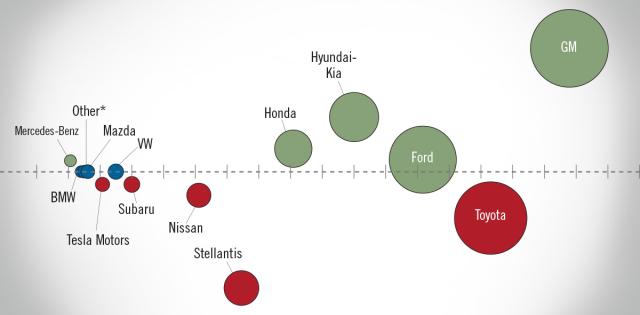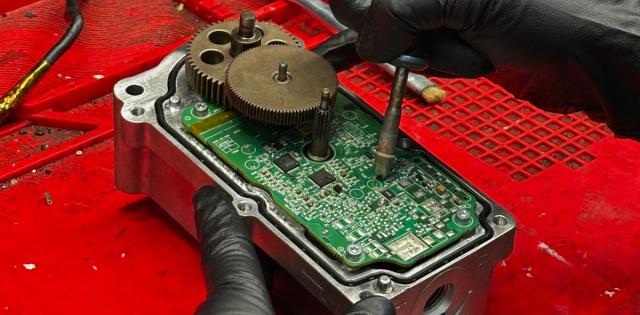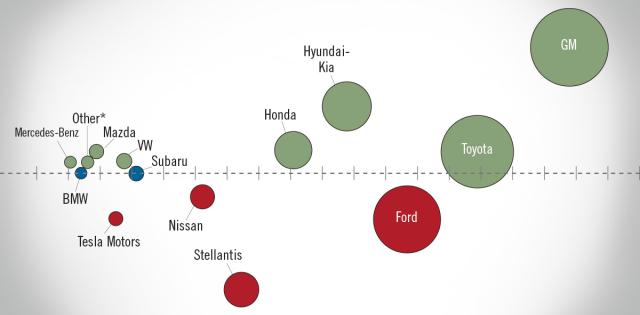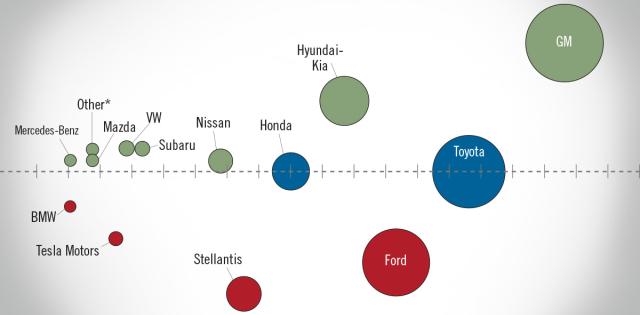The article below is sourced from Bloomberg Wire Service. The views and opinions expressed in this story are those of the Bloomberg Wire Service and do not necessarily reflect the official policy or position of NADA.
When Toyota Motor Corp. introduced the world’s first hybrid gasoline-electric vehicle in 1997, it made a loss on every Prius it sold. Decades later, booming sales in the category are delivering a much welcome cash boost.
The world’s largest auto manufacturer recently reported annual operating profit of ¥5 trillion ($32 billion), the first time any Japanese company reached that threshold, with an industry-topping margin of 11.9%. Hybrid sales jumped 32% to 3.59 million units, accounting for one out of every three cars Toyota sells.
With the shift to battery-electric vehicles clearly taking much longer than anticipated, consumers are voting for hybrids with their wallets. That gives Toyota, Honda Motor Co. and other carmakers with hybrid lineups an opportunity to gather up cash that can then be reinvested in the long transition to fully-electric cars.
The profitability of Toyota’s hybrids versus gasoline-engine cars are “now the same, and in some cases more for some models, which means that the more we sell, the more they will contribute to profitability,” Masahiro Yamamoto, an operating officer in the accounting group, said at Toyota’s post-results briefing on May 8.
The cost to manufacture hybrid vehicles is now a sixth of the level compared with when the Prius debuted. Toyota forecasts 4.48 million hybrid vehicle sales in the current fiscal year through March 2025, giving the company a decent chance of reaching its goal of 5 million units ahead of its goal for next year.
Honda has also improved the profitability of its hybrids, Chief Executive Officer Toshihiro Mibe said at the carmaker’s earnings news conference on March 10. Excluding EVs, Honda’s four-wheeler business should be able to post an operating profit margin of around 8% this fiscal year, according to the CEO. The low profitability of the unit has been an issue for years; the margin stood at 4.1% last year, following a ¥16.6 billion loss in the prior period. Hybrids are “very competitive, including on the cost front,” he said.
Honda is now targeting hybrid sales of about 1 million units this fiscal year, up from approximately 800,000 in the latest period. Mibe said he’s laying the groundwork and working with suppliers to build capacity to 2 million units annually, in anticipation of greater demand.
Nissan Motor Co. is also seeking to capitalize on the hybrid boom. In its medium-term management plan announced in March, the Japanese carmaker said it’s planning to introduce models employing its proprietary “e-Power” hybrid technology in the US market in fiscal 2026.
It’s not just Japanese automakers leaning more toward hybrids. Ford Motor Co. is planning to double production of hybrid versions of its F-150 pickup and lower prices to match the gasoline model. South Korea’s Hyundai Motor Co. reportedly has plans to enable its EV plant being built in Georgia to also be able to manufacture hybrids.
Even Japan’s smaller automakers are following the trend. Mazda Motor Corp. President Masahiro Moro said last week that carmaker plans to develop hybrids using its SkyActive engines to deliver improved performance for its CX-5 models.
“The media, investors and dealers are all talking about ‘hybrids, hybrids, hybrids,’” Moro said. “The perception has changed dramatically.”
For more stories like this, bookmark www.NADAheadlines.org as a favorite in the browser of your choice and subscribe to our newsletter here:










